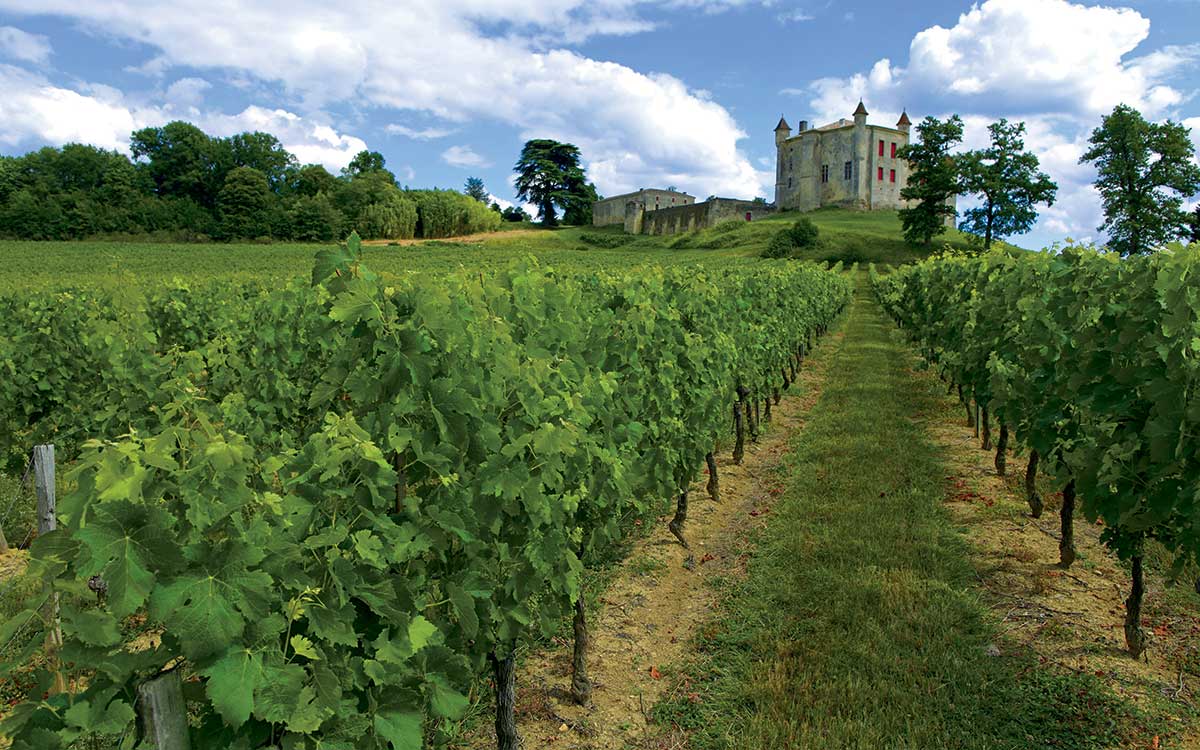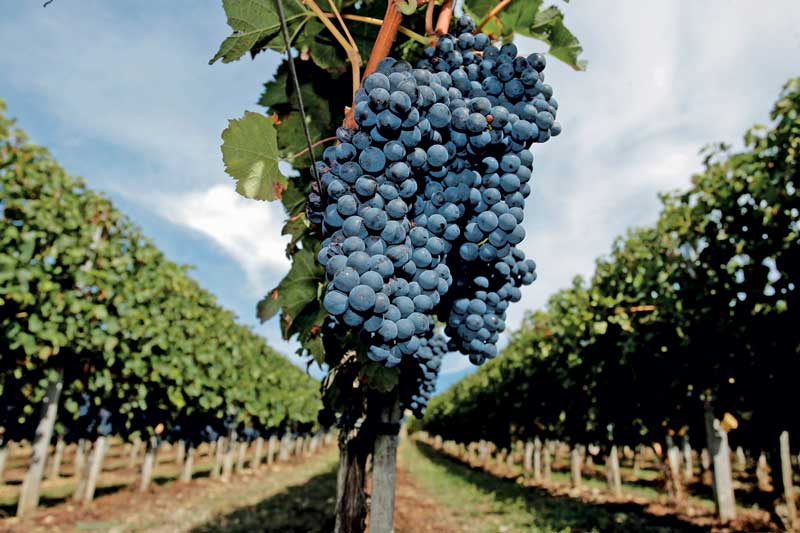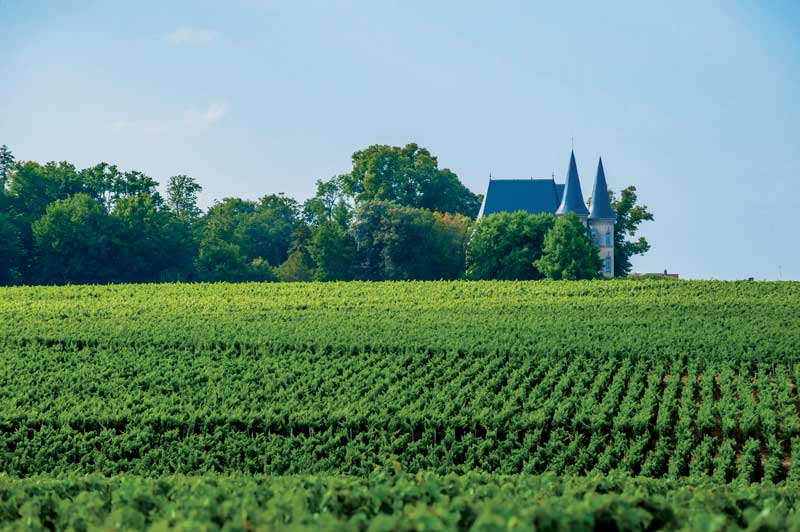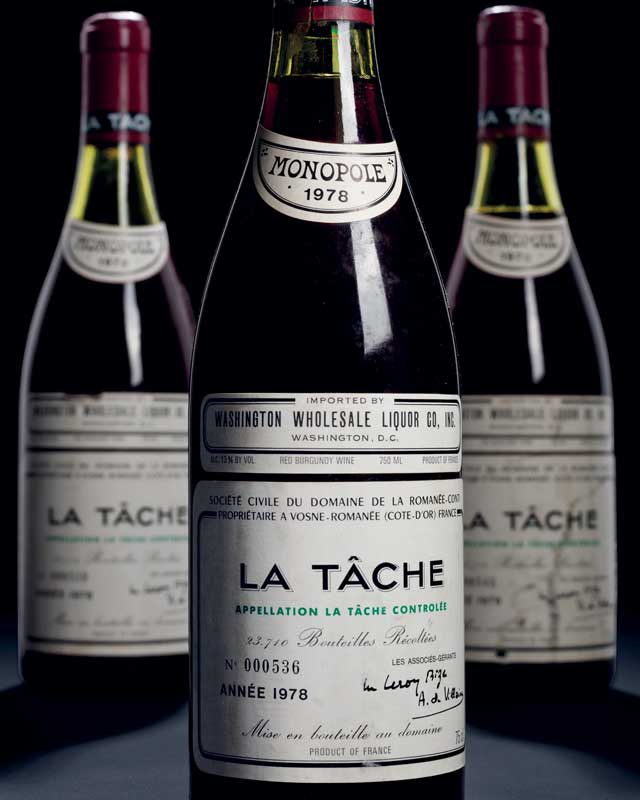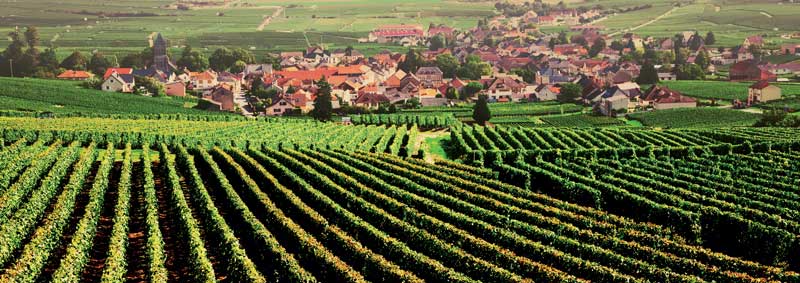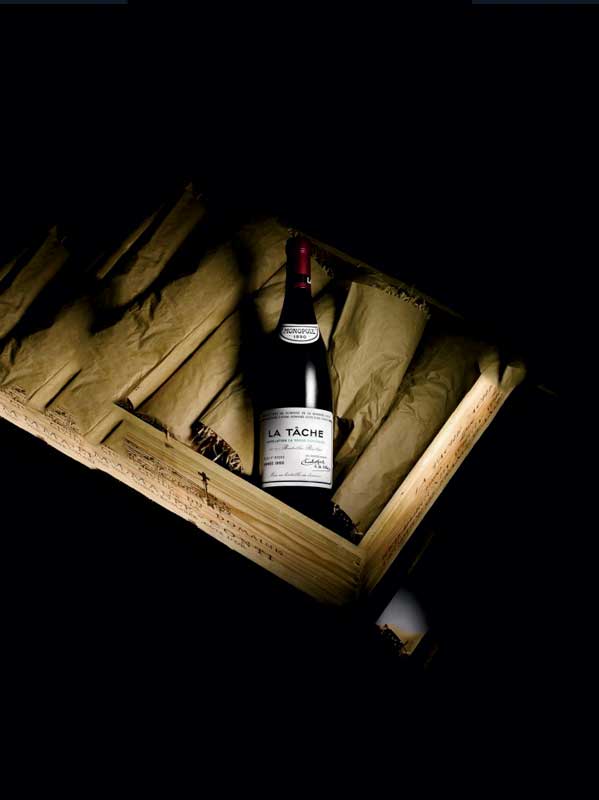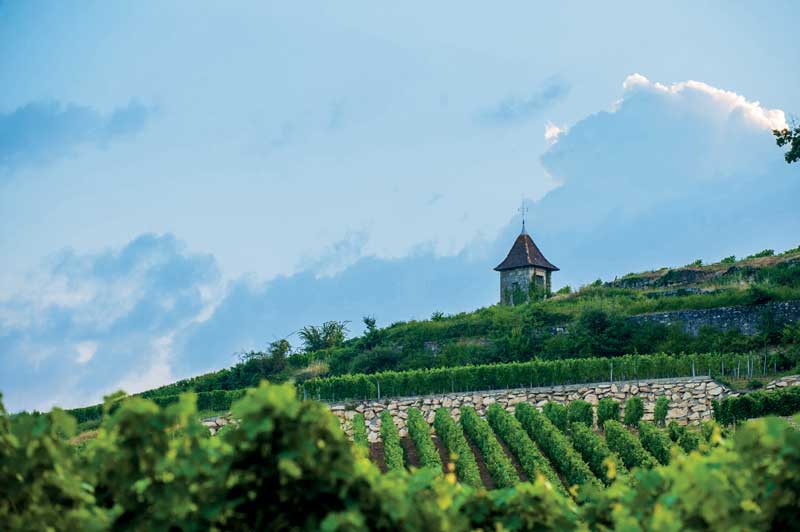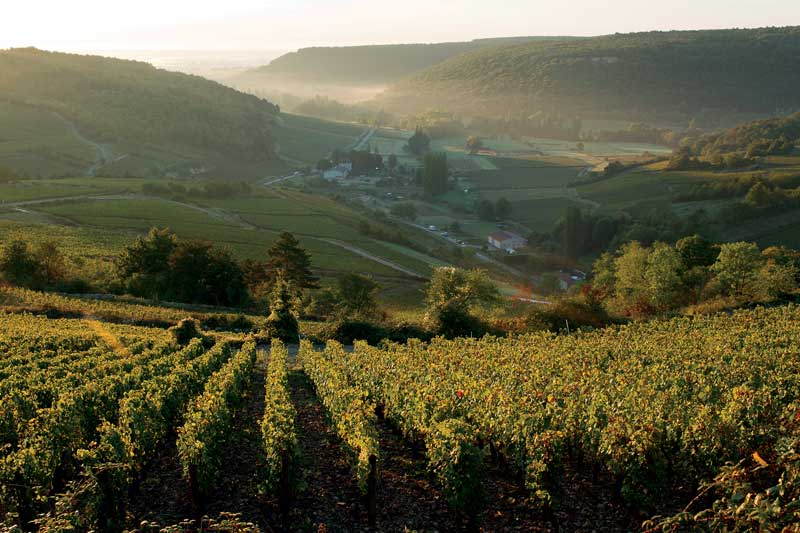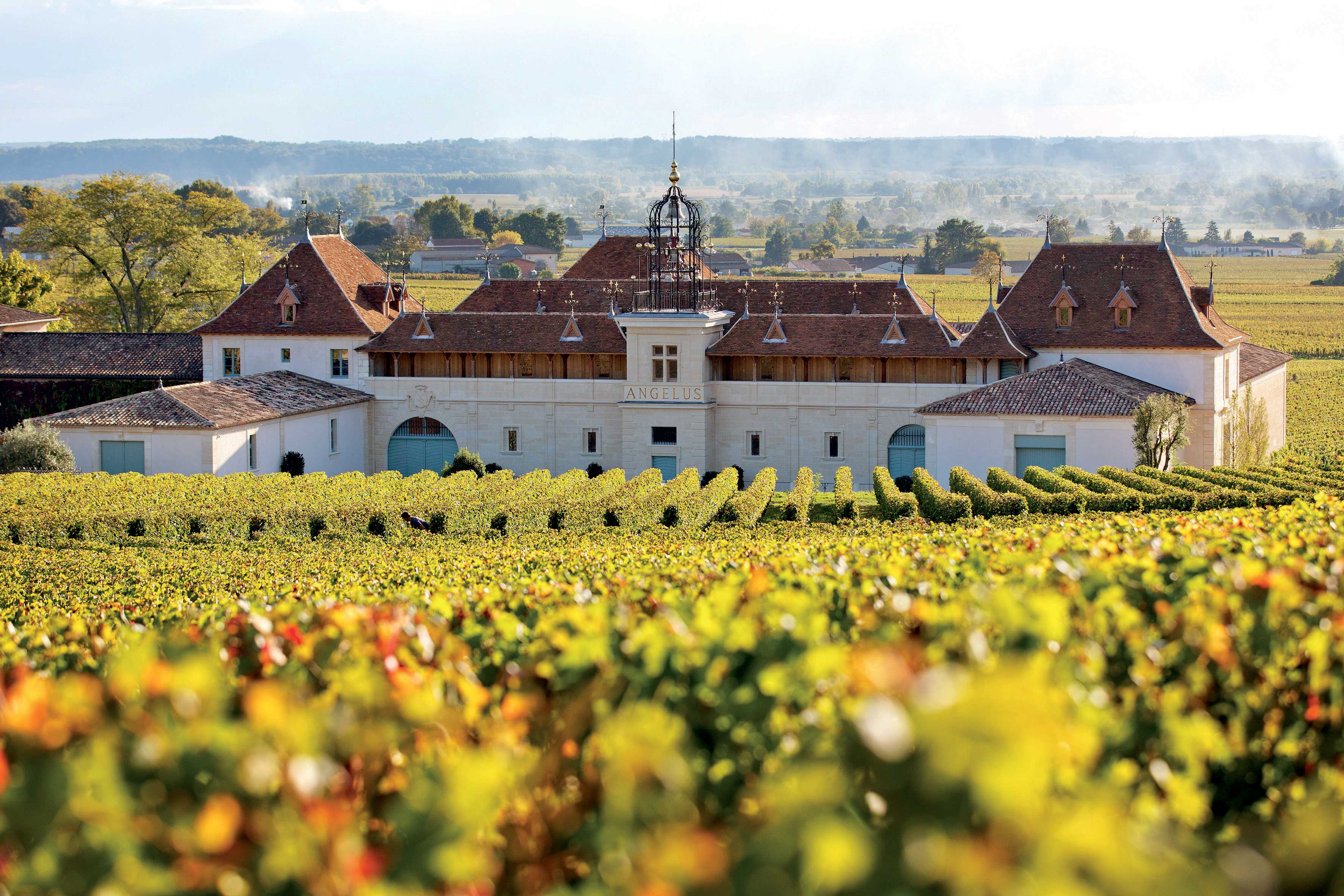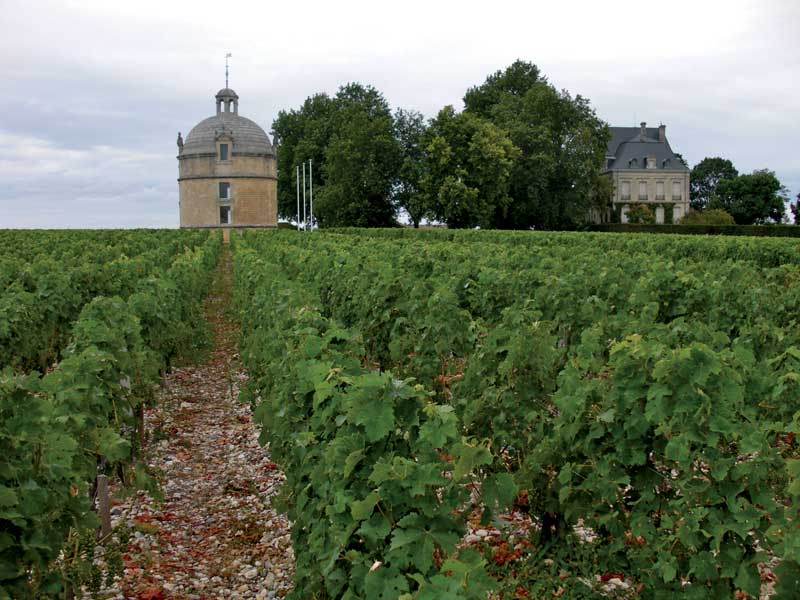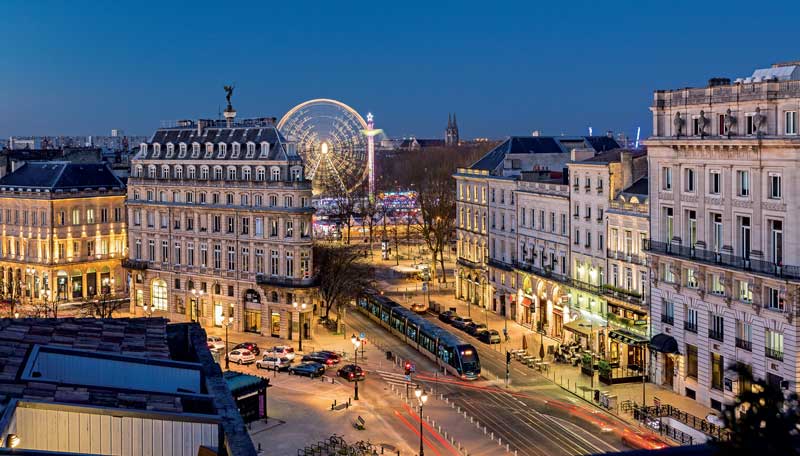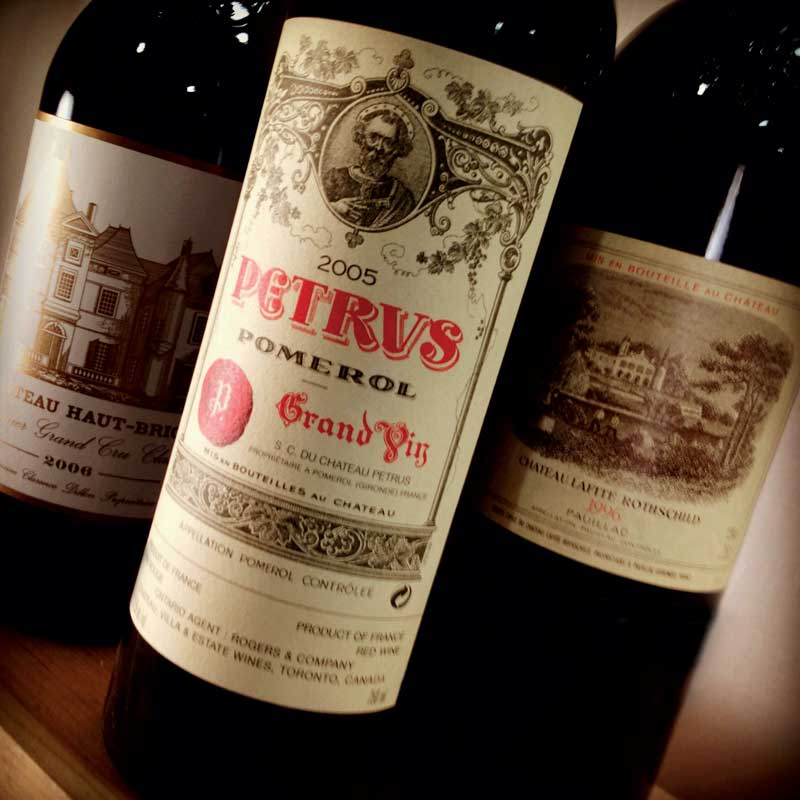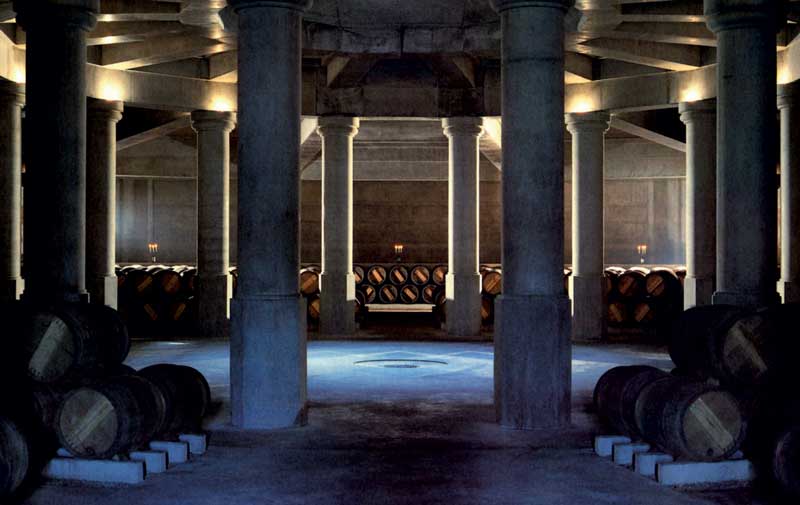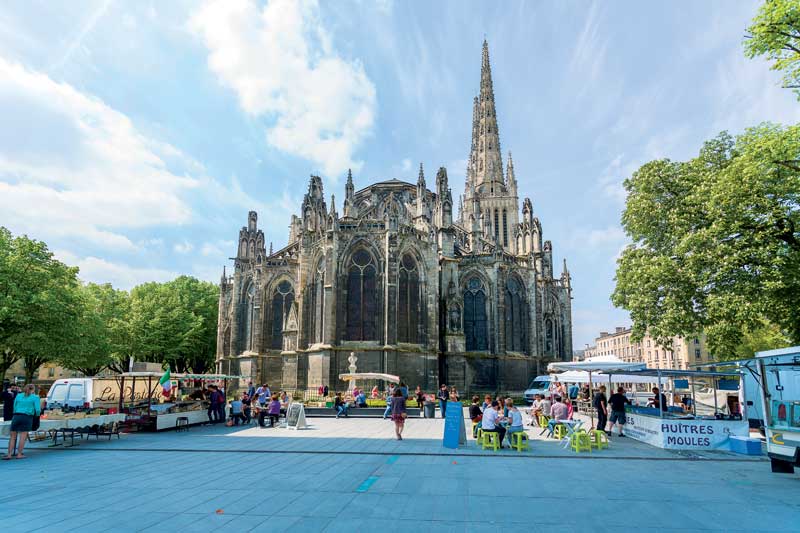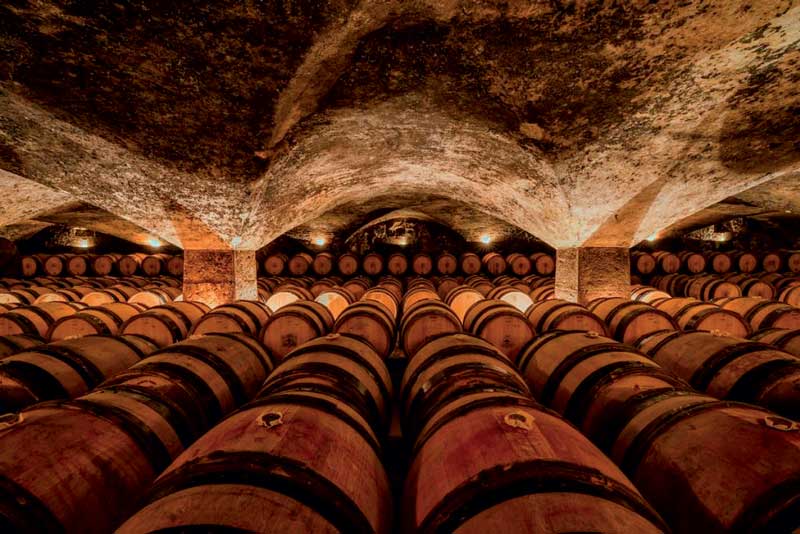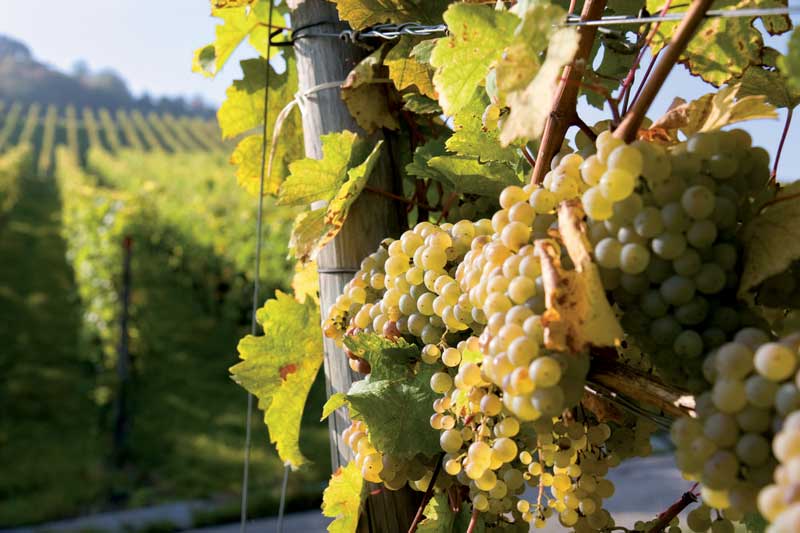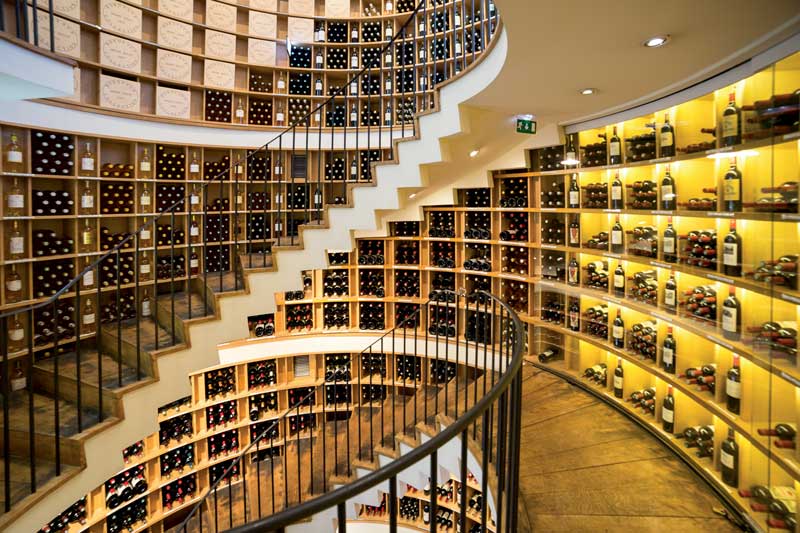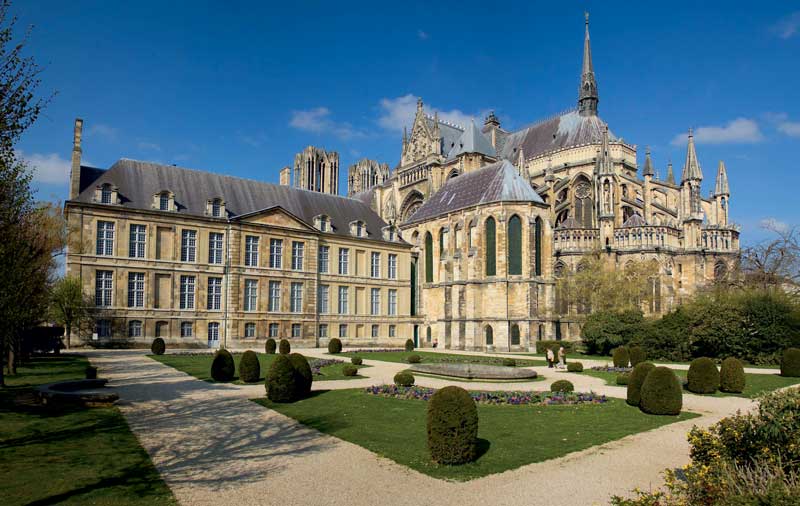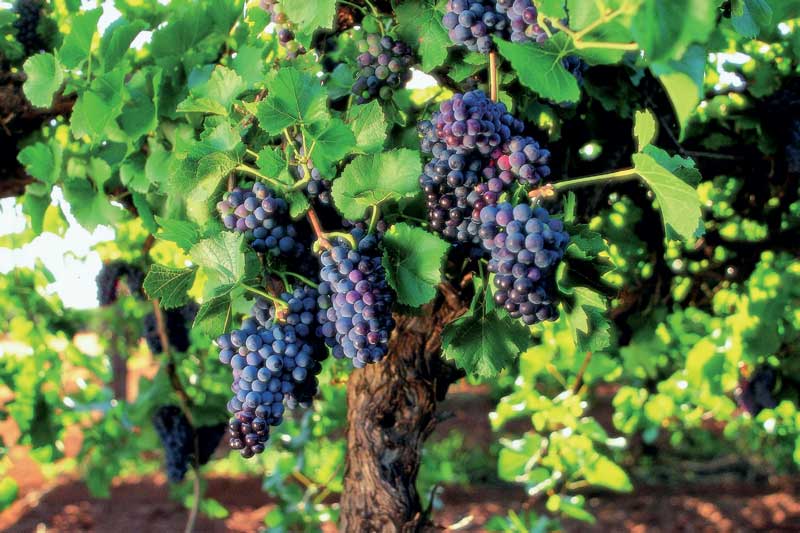Bon Jour! Hello dear readers, today I will tell you about the country where one of the most important wine cultures in the world has developed: France.
When talking about France we’re immediately transported to the Eiffel Tower, the Champs Elysees and the Louvre Museum; however, for us wine lovers, our minds take us to the great and elegant wines of Burgundy, to the bubbles enclosed in each bottle of Champagne, to the stories behind the great families that founded Bordeaux; and so forth we can continue mentioning regions and landscapes, where every bit of that great vineyard-turned-country will tell us all of its stories through the centuries.
But how did wine arrive in France? How does wine culture really develop? With no intention of giving a history lesson, I will tell you that we owe it to the Roman Empire that today we have the elegant wines of Burgundy and the powerful wines of the Rhône region. The greatness of that empire spread to almost all of Europe, and thanks to this, the vines spread throughout most of Gaul—what we now know as France.
But let's get into the regions that by tradition you shouldn’t miss in your next trip to the French land:
Burgundy
Although there are records from the 3rd century AD about the boom in wine production in the area, it was a change of vine selection that helped the vineyards find better fortune, and they began using a variety called “allobrogica”. However, it’s with the Cistercian monks, during the thirteenth century, that vineyard quality levels were established, better known as “Crus”, through which the different “microclimates”, better known as terroirs, are studied. For me, this region is “the jewel in the crown” in terms of French wines.
The region of Burgundy is divided into four: from north to south we have Chablis and Grand Auxerrois, Côte d'Or, Mâconnais and Châlonnais. They all have their own charms and a lot of history to tell us. One of the great trips through this region is the one called the “Route Des Grands Crus”, which consists of a journey that spans 60 kilometers in the Côte d'Or.
On this trip we can appreciate the different hills and vineyards in display as a prelude to the Climats, which were proclaimed as a World Heritage Site by UNESCO in 2015. It’s worth mentioning that, in 2017, it celebrated its 80th anniversary as an established wine route, the oldest in the world. You can also visit the Abbey of Cîteaux, 19 kilometers from our starting point in Dijon, birthplace of the aforementioned and important Cistercian monks.
We will journey through the most recognized sites for any collector: Clos de Vougeot (current home of “les chevaliers du taste vin”), Vosne Romanée (where you can find the most renowned wines, such as Richebourg, La Romanée Conti, Grands Echézeaux). I would recommend that we spend one morning appreciating
Although there are records from the 3rd century AD about the boom in wine production in the area, it was a change of vine selection that helped the vineyards find better fortune, and they began using a variety called “allobrogica”. However, it’s with the Cistercian monks, during the thirteenth century, that vineyard quality levels were established, better known as “Crus”, through which the different “microclimates”, better known as terroirs, are studied. For me, this region is “the jewel in the crown” in terms of French wines.
The region of Burgundy is divided into four: from north to south we have Chablis and Grand Auxerrois, Côte d'Or, Mâconnais and Châlonnais. They all have their own charms and a lot of history to tell us. One of the great trips through this region is the one called the “Route Des Grands Crus”, which consists of a journey that spans 60 kilometers in the Côte d'Or. On this trip we can appreciate the different hills and vineyards in display as a prelude to the Climats, which were proclaimed as a World Heritage Site by UNESCO in 2015. It’s worth mentioning that, in 2017, it celebrated its 80th anniversary as an established wine route, the oldest in the world. You can also visit the Abbey of Cîteaux, 19 kilometers from our starting point in Dijon, birthplace of the aforementioned and important Cistercian monks.
We will journey through the most recognized sites for any collector: Clos de Vougeot (current home of “les chevaliers du taste vin”), Vosne Romanée (where you can find the most renowned wines, such as Richebourg, La Romanée Conti, Grands Echézeaux). I would recommend that we spend one morning appreciating Dijon, “the city of a Dijon, “the city of a hundred bell towers”, and hear all the stories that linger along its streets. Another stop that proves more than necessary is “Hospices de Beaune”, a place full of history with its gothic architecture from the15th century, and everything it represents for French wine; year after year it hosts an auction for the wine they make from the 60 hectares they own in Côte de Nuits, Côte de Beaune and Pouilly-Fuissé. This paves the way for one of the most important events worldwide, bringing together the most acclaimed critics and the most relevant collectors.
There are incredible restaurants around the different vineyards, where everything revolves around wine, and it’s worth eating in all possible places; but if you are one of those souls who prefer haute cuisine, I have to mention that in Dijon there is a two-Michelin-star restaurant that bears the name of Chef William Frachot, located in “Hostellerie du Chapeau Rouge”. It’s a must!
There is so much more you can discover. Burgundy, as AOC, has a tourism department that can help you organize the perfect trip to discover the region—an oenophile honeymoon, a family trip or among friends. I invite you to visit the region’s website and find out everything there is to discover.
http://www.burgundy-tourism.com
Rhône Valley
If we look a bit southwards of Burgundy, we’ll come upon the best exponent of Syrah and Grenache in the world. This is the Rhône region. This territory is enigmatic because we find it divided in two: the northern part, where the Syrah is the star thanks to the volcanic soils coming from the Great Massif, and the northern part, where the Grenache is present in complex wines. The soils are rich in marine calcareous sediments and sands (obtained 40 million years ago), a decisive and differential factor compared to other producing areas of the same grape.
There are also traces of Greek culture in the area. However, these only indicate that they marketed wine, but they didn’t actually make it here. The Romans were highly influential once more, since there is data from that period that pinpoints winemaking in the lower area of Côte Rôtie and Saint Joseph. In the first century, the wines of Vienne la Vineuse were already talked about as the best quality wines in Gaul.
“Beer is made by men, wine by God.”
– Martin Luther
The history of Rhône is closely linked to the church, because Pope Gregory X changed the papal seat to Avignon in the fourteenth century; he was the first of seven popes to live in the area. Pope John XII commissioned his residence in Châteauneuf du Pape, and this marked the beginning of a 200-year period, when trade across the rivers gained momentum, making it one of the most important territories of the time.
This region begins near Lyon. Taking the Rhône River as a guide through these historic vineyards, in the northern side we can admire the Côte Rôtie, where we find the Syrah in its maximum expression and where the slopes in the vineyards reach up to 60° of inclination—a true natural spectacle. Nearby in Vienna, we find the Cathédrale Saint-Maurice de Vienne, a cathedral that was mentioned for the first time in books in the year of 314. If we follow the river to the south, we will pass Condrieu towards the home of the Viognier grape: Château-Grillet. Arriving at Touron-Hermitage, we’ll find a train that will take us through the vineyards to one of the best views of the area. Here I suggest that you try the wine from Hermitage; together with Côte Rôtie, this is my favorite region to taste a fleshy Syrah with a spicy and leathery touch.
Before heading south, I recommend that we stop by Saint-Peray to visit a couple of castles, such as the Château de Crussol from the 13th century, and Château Musée, built between the 15th and 16th centuries, and which now serves as a museum. South from there, we find a large number of AOP worth exploring north to south and east to west; the classic and most recognized in this area are the Châteauneuf du Pape and Gigondas.
In Châteauneuf du Pape we will find one of the areas where they can use the largest amount of grape species; 13 types are allowed in this AOP, being Grenache the main exponent. Syrah and Mouvèdre complete the grapes in this region, where 93% of the wine they make is red. Gigondas is surrounded by the Dentelles de Montmirail, a small mountain range, making it a one-of-a-kind place; this area is characterized by the power and strength of the Grenache, where at least 80% of the wine must have this variety. If you like climbing and hiking, this is the ideal spot to take a break from wine.
Bordeaux
We will travel to the French west coast, just by the Atlantic Ocean, where the River Gironde finds its source. This is where the most recognized region begins, along with Burgundy: Bordeaux. When we hear of this place we are immediately transported to the great Châteaux—to opulence and economic power as far as wine is concerned.
But let's cover its origins and how it came to be the place we know today. In this territory, there are traces of Greek presence and winemaking, and the Romans held it until their fall; the rivers in the surroundings allowed the development and importance of this region to reach other kingdoms, unlike the continental lands.
Thus, in the year of 1152, the union between Eleanor of Aquitaine and Henry II, future king of England, created a monopoly of Bordelaise wine throughout the British Empire, leading to a very large territorial expansion. All this was halted during the Hundred Years' War. It was until 1475 when King Louis XI allowed English ships to reach the ports of Bordeaux; however, it never experienced the same success it once had.
Some time later, in the 17th century, the Dutch—big merchants and traders—arrived with innovation and technology. They are the forerunners of the use of barrels. Thus we arrive to the great classification of wines. In 1855, Napoleon III ordered this classification to be created, which we continue to use nowadays as a guide to producers.
We’ll divide Bordeaux in two to make it easier; the left side and the right side. With the river Gironde as reference, on the left side the communes are nestled; this is where we find all the châteaux that the 1855 classification refers to. For those who are just discovering this area, I have to mention the first locations on this list: Château Margaux, Château Haut-Brion, Château Lafite Rothschild and Château Latour. Château Mouton Rothschild is the only and last one to be added to this list in 1972. It’s always a unique experience to try these wine producers.
However, there is more after tasting these wines; on that side of the river, we still have to discover Graves, with Pessac-Leognac and Sauternes as the main ones in the area, plus Saint-Estèphe; Saint-Julien and Margaux. All the wines that we find on this side of the river are mainly Cabernet Sauvignon, always accompanied by Merlot, Cabernet Franc, and in some cases, Carmenere and Malbec.
On the right side of the river, there are equally great wines. Maybe they don’t have the same classification, but believe me; they are at the same level. We will find wines from the Château Petrus, Château Cheval Blanc and Château Angelus. Here, the main producing areas are Pomerol and Saint-Émilion; Pomerol is recognized as one of the best producers of the Merlot grape, and in Saint-Émilion we will find both Cabernet Franc and Merlot as the main grapes. The difference between soils facilitates this kind of diversity in so little physical space.
What to visit here? Everything! Fortunately for all wine lovers, wine tourism is very important for locals, and they have created different routes that you can explore through different tour operators. However, if you want to go to a particular winery, I recommend that you contact them before making your trip there, so you can plan a better experience—you have no idea how many wine lovers visit the region every day. Don’t forget that they have also been declared as World Heritage by UNESCO since 2007.
One last recommendation: buy tickets to the Cite du Vin. I will not spoil it for you; I will simply say that it’s Disneyland for wine lovers.
https://www.laciteduvin.com/en
Champagne
Of course we couldn’t leave this marvelous region out. I think that right now I wouldn’t be able to understand my love for the world of wine without the mystery inside every bottle that is produced and which delights palates around the world.
Getting to that essential point, when the traditional method for creating bubbles (previously known as champenoise) has been executed, is complicated. There’s a treaty where the English implied that they are the precursors. However, in this treaty, the bubble is created only after the wine is finished and not as part of the process. This is a testament to the kind of specialization that the French have earned over the centuries. This wine was cited for the first time in 1676 by Sir George Etheredge as endemic to the specific region of “Champagne”.
But let's go step by step. What is the traditional method or champenoise? This method generates the wine bubbles from a second controlled fermentation through the addition of sugar and yeast, which is done bottle by bottle and rests for at least a year and a half.
The capital of Champagne Reims is almost two hours from Paris by car. The first thing they should do to focus on the wine experience is to visit the Cathedral of Reims built in the 13th century with its extraordinary Gothic style, embellished by several sculptures, of which a smiling angel is the most attractive. "Sourire de Reims", the Cuvée Prestige from the Henri Abelé winery, was named after this sculpture.
From here on, there’s so much to visit and so much to see, that it’s necessary to plan our activities quite well. We must know that champagne producers have several classifications; the best known are the maisons, who are the largest producers of excellent wines, and who purchase part of the grapes they use. Visiting their giant underground cellars is quite the spectacle. There are also the vignerones. Who are these producers? They are the ones dedicated to making champagne exclusively with their grapes. Can you imagine? I think that being able to see the difference in production between a big and a small producer would make us all appreciate the craft. The other player is called a cooperative; here, we will find all the producers who have grapes but don’t have facilities to make their champagne. These can label individually or offer their product to be sold as part of the cooperative. The coexistence and experience found at these wineries! There are only four of them registered in Champagne, so it won’t be difficult for us to choose one.
Thus I bid you farewell. Thank you for reading and accompanying me on this great journey through some of the relevant regions of France. If you have any questions about how to plan your trip, you can contact me by email or through social media.
Santé!
This email address is being protected from spambots. You need JavaScript enabled to view it. / Instagram @PabloMata / Twitter @PabloMataSomm
Text: Amura ± Photo: ©VINCENT BENGOLD / THE WINE CELLAR / PGT / SPINACH IMAGE / ©STEVE LE CLECH PHOTOS / : LE PARSIEN / © ATOUT FRANCE,E/OLIVIER ROUX,CDT CALVADOS,FRANCK CHAREL / FRENCH WINE HARVEST / CHRISTIE'S / HOSTED VILLAS / TRPSITE / UWINE / BOUGER / THE BORDEAUX TRADITION / MELBOURNE WINE / WINES NIAGARA / RICAR-DO BOFILL / ASD / PMT / CHATEAU DE MARSANNAY / ISTOCK / BAS / CMF / VINUMMEDIA

